
Updated: October 25, 2022 : 2 min read
PET/CT Market Valuations: Four Questions to Answer
New PET/CTs are usually one of the most expensive scanners in a hospital or imaging facility. Most hospitals and clinics will upgrade CTs twice and their ultrasounds four or five times before upgrading their PET/CT. Because of this, many of the PET/CT valuation calls we receive are from people who have faced selling a used PET/CT system before. In many cases, they're overwhelmed with gathering the amount of information needed to determine the value of their system. And, because of workload and competing priorities, they don't have time to answer 50+ questions.
Does this sound like you? "What does someone really need to know to tell me the approximate value of my PET/CT system?"
More information will always give you the most accurate valuation. But, there are FOUR (yes, only four!) most important questions. If you can answer the following, you've already taken the first step to making your sale.
Four Questions to Determine Your PET/CT Value:
1. What is the Make, Model, & Year?
These details are definitely needed. Anyone who might be buying your PET/CT system needs to know who made it, which model it is, and how old it is. Don't worry if your system is a bit older. The answers to the other questions often have more to do with value than a simple date of manufacture.
2. How many slices does it have?
Most of the time, the make, model, and year will tell a buyer the slice count as it's in the name (Discovery ST 16, Siemens Biograph 40). But sometimes, the slice count is not included in the name (GE Discovery 690, Philips Gemini TF). If you're unsure, a picture of the configuration screen like this one can do the trick.
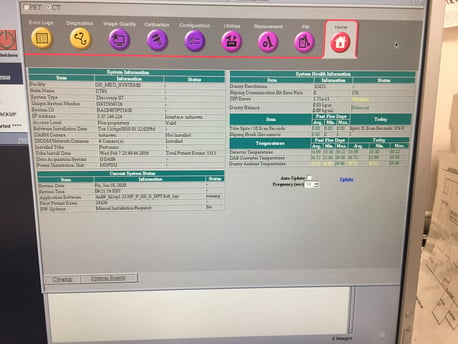
3. What workstations and software options are with the system?
Does it have cardiac or respiratory gating options? Calcium scoring? Neuro package. Is time of flight enabled?
These options may have been disabled or included in the original sale. Or, you may have had upgrades put on the system later as needs changed. They can be loaded onto the system itself or on the workstation. And, they can make a difference in the sales price.
On GE systems, early models an acquisition, reconstruction, and processing workstation. But on later models, they were combined into one console. So, for example, it could have a Xeleris processing workstation, or it could be a Dimension or newer console that combines acquisition and processing.
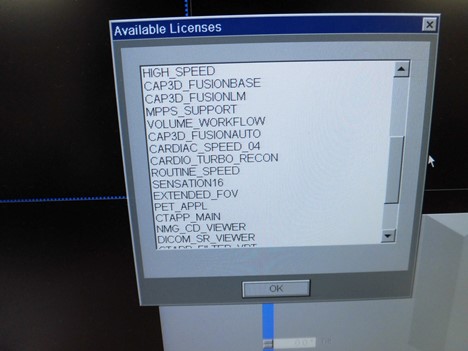
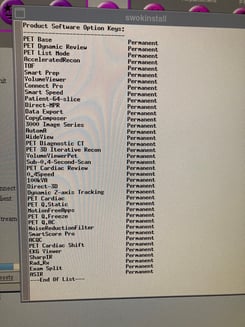
4. What is the Tube Usage
The CT tube on a PET/CT is one of the most important value drivers, and the most important image of this component is the one showing the overall usage of the current CT tube. PET/CT manufacturers use several metrics for this, but the software keeps a running total of the time a tube had power applied to it and was scanning. GE refers to it as "Tube Usage" and quantifies it in mAS "milliamp seconds" Siemens counts "scan seconds" while Philips refers to it as "Exposure Seconds." A photo of the tube statistic screen for any of them should suffice to give potential buyers a good idea of how much a tube has been used. Here are a few examples:
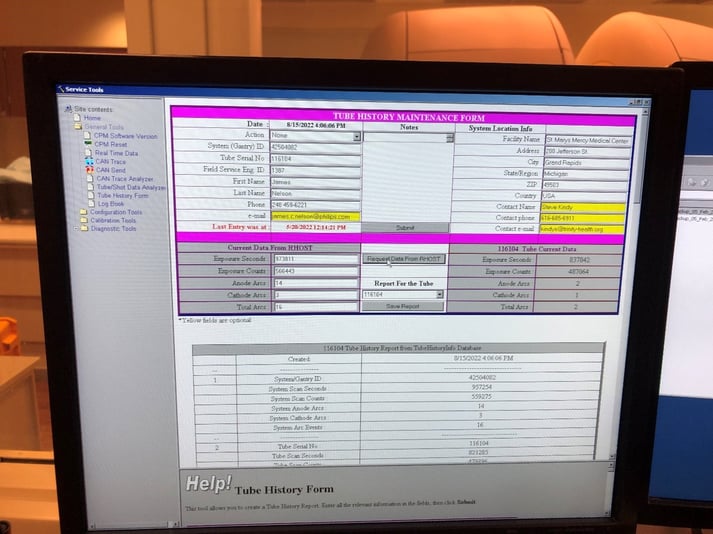
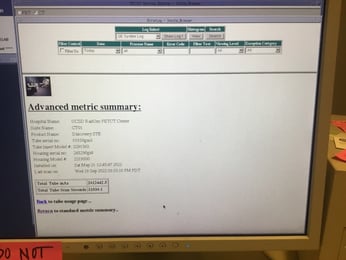
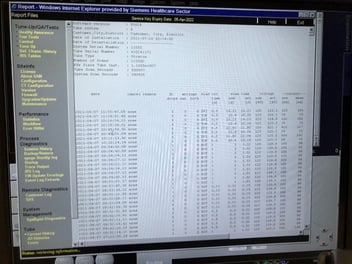
the takeaway:
Valuing a PET/CT system doesn’t have to be difficult. With some basic information about your system, a reputable buyer will be able to provide an estimate of your system’s value. Keep in mind that the more information you’re able to provide, the more accurate the estimate you’ll receive.
At Block Imaging, we do this all the time, so we can give you a good idea of what to expect. If you're valuing for insurance, financing, or even simple curiosity, we're happy to help.

Josh Nunez
Josh Nunez is the Director of Product Management at Block Imaging. Josh is energized by developing an understanding of each customer's unique imaging needs and overcoming the challenge of helping find them the perfect equipment match. When he is not providing PET/CT solutions he enjoys traveling, soccer, and spending time with his wife and five kids.





